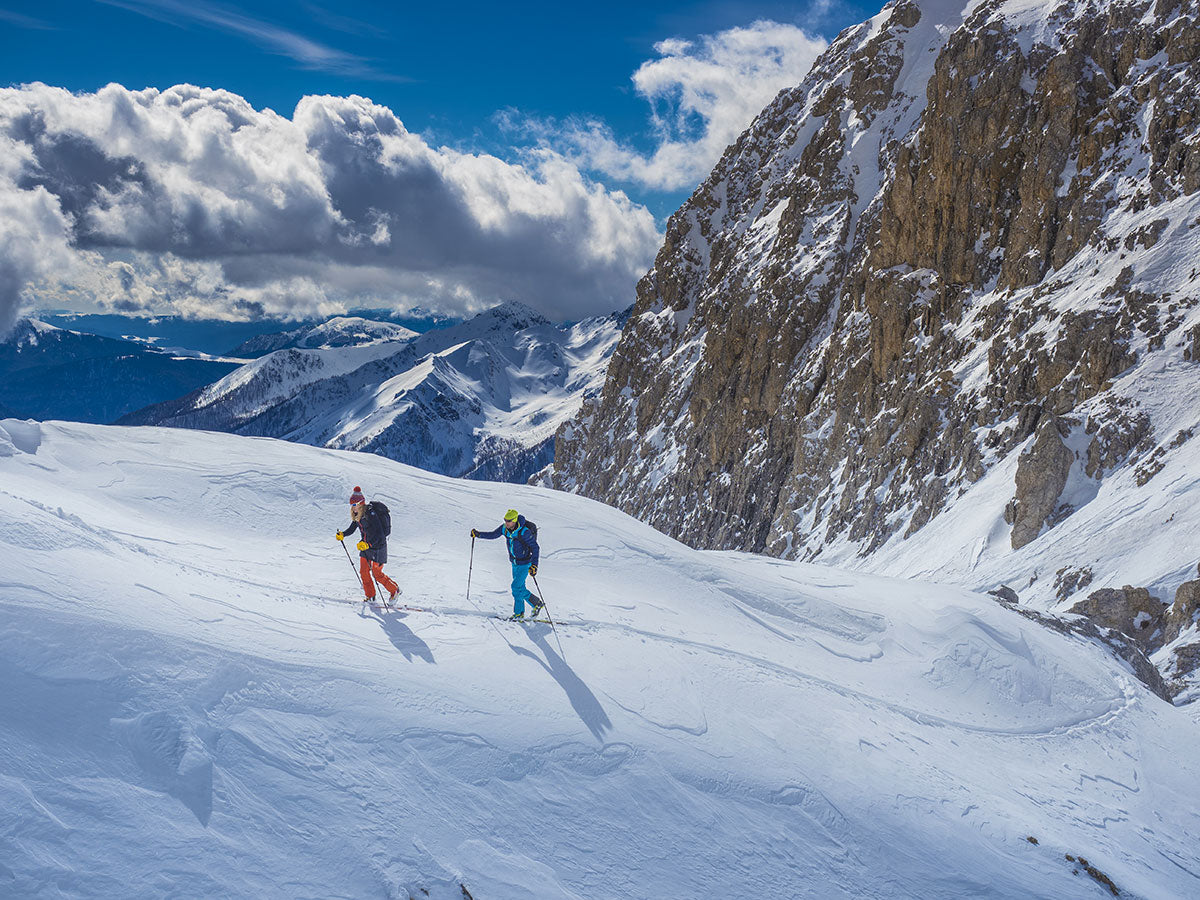Order over $100 and get Free shipping in Canada
Free shipping Across Canada On Orders Over $100

By Joel Desgreniers, physiotherapist and co-owner of SkiUphill-RunUphill
Can you feel it? The shortest days of Winter are finally behind us and soon it’ll be alpine starts and traverse season! At SkiUphill, Spring skiing always means a huge increase in customers coming in for bootfitting challenges. Boots that have been feeling great all winter suddenly feel like torture devices, and what seemed like a perfect fit becomes highly uncomfortable. More often than not, small issues can lead to big discomforts, but there are tons of easy fixes when boots suddenly don’t feel right.
Laces: Use them
If your boot liners are equipped with eyelets, it is a great idea to use laces. A laced liner will move better with your foot when skinning and it will prevent many common rubbing issues. A liner rubbing against the shell is always better than your heel rubbing inside the liner. You don’t like laces? Carry them in your backpack on long days or multi-day trips. You’d be surprised of how many blister problems are fixed by simply lacing your boots.
Insoles: A neutral foot is a happy foot
New ski boots almost always come with very basic, thin insoles. Stock insoles are really only thin shims that give you a general idea of a boot’s fit. For some skiers they work, but many need more support to increase performance and comfort. Non-supportive insoles let your foot deform and pronate* when the buckles are closed. They also struggle to « lock » the foot nicely inside the boots. Do yourself a favour, invest in a pair of basic drop-in insoles. Fully-customized insoles improve precision and comfort the best, but most skier’s needs will be met with a pair of well fitted drop-in insoles. By providing the foot with a more stable and supportive foundation to rest on, it will fix many loose heels and sore arches. Think about it, when you tighten your boots to ski downhill, the buckles compress your foot inside the shell. If there is nothing to lean against inside the boot and if your foot has some flexibility, it will get compressed into an unnatural and uncomfortable position.
Bootboards
New boots always feel nice and snug. However, liners naturally pack out over a few seasons due to wear. As a result, boots can feel too roomy in walk and in ski mode. It might be time for new liners if your current ones are in really bad shape, but a simple bootboard can fix milder volume issues. What’s a bootboard? It’s just a shim that is inserted inside the shell and under the liner to reduce the height and space available. What is awesome about bootboards? You can easily take them out if they don’t feel good, or they can be added in the field. If they work, they can also be glued permanently inside the shells. A quick and inexpensive fix that can make your day or your Spring.
Socks : Have a variety of thicknesses
Warmer temperatures and longer days mean wider and bigger feet. If you feel constricted in your boots as soon as the temperature rises, give a thinner ski sock a try. On Spring multi-day trips, carry a pair of thin socks even if you are used to thicker weight socks. This way you will be able to make up for a thighter than normal fit. Thin ski socks will also keep your feet cooler.
What to carry for your feet on a multi-day trip?
Got any bootfitting questions or issues? Our team is professionally trained and includes a physiotherapist. Give us a shout, or come by for coffee and we can discuss how your fit can be optimized!
{"one"=>"Select 2 or 3 items to compare", "other"=>"{{ count }} of 3 items selected"}